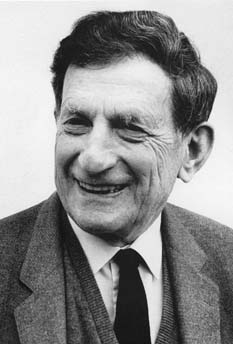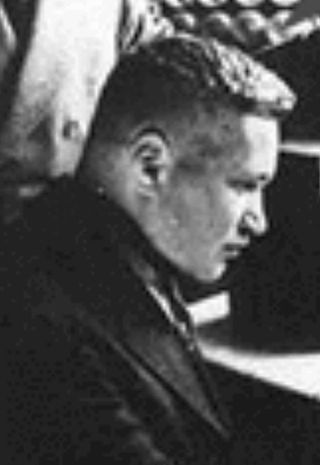
David Joseph Bohm was an American scientist who has been described as one of the most significant theoretical physicists of the 20th century and who contributed unorthodox ideas to quantum theory, neuropsychology and the philosophy of mind. Among his many contributions to physics is his causal and deterministic interpretation of quantum theory known as De Broglie–Bohm theory.
Optica, founded as the Optical Society of America, is a professional society of individuals and companies with an interest in optics and photonics. It publishes journals, organizes conferences and exhibitions, and carries out charitable activities.

Lyman Spitzer Jr. was an American theoretical physicist, astronomer and mountaineer. As a scientist, he carried out research into star formation and plasma physics and in 1946 conceived the idea of telescopes operating in outer space. Spitzer invented the stellarator plasma device and is the namesake of NASA's Spitzer Space Telescope. As a mountaineer, he made the first ascent of Mount Thor, with Donald C. Morton.

Philip Warren Anderson was an American theoretical physicist and Nobel laureate. Anderson made contributions to the theories of localization, antiferromagnetism, symmetry breaking, and high-temperature superconductivity, and to the philosophy of science through his writings on emergent phenomena. Anderson is also responsible for naming the field of physics that is now known as condensed matter physics.

John Hasbrouck Van Vleck was an American physicist and mathematician. He was co-awarded the Nobel Prize in Physics in 1977, for his contributions to the understanding of the behavior of electronic magnetism in solids.
Paul Peter Ewald, FRS was a German crystallographer and physicist, a pioneer of X-ray diffraction methods.

William Frederick Meggers was an American physicist specialising in spectroscopy.

Frank Kelley Edmondson was an American astronomer.
Joseph Charles Farman CBE was a British geophysicist who worked for the British Antarctic Survey. Together with Brian Gardiner and Jon Shanklin, he published the discovery of the ozone hole over Antarctica, having used Dobson ozone spectrophotometers. Their results were first published in May 1985.

Richard Lawrence Garwin is an American physicist, best known as the author of the first hydrogen bomb design.

Edoardo Amaldi was an Italian physicist. He coined the term "neutrino" in conversations with Enrico Fermi distinguishing it from the heavier "neutron". He has been described as "one of the leading nuclear physicists of the twentieth century." He was involved in the anti-nuclear peace movement.

Lew Kowarski was a Russian-French physicist. He was a lesser-known but important contributor to nuclear science. He participated in the British Tube Alloys on early nuclear weapon research. After the war he worked at CERN.

George B. Field was an American astrophysicist, Harvard University professor and founder director of the Harvard–Smithsonian Center for Astrophysics. The Wouthuysen–Field coupling, a theoretical model used to study the phase transitions of the early universe, is named after him.
Van Zandt Williams (1916–1966) was president of the Optical Society of America in 1966. He was the Director of the American Institute of Physics in 1965.

William B. Bridges was an American engineer and inventor who was the Carl F. Braun Professor of Engineering, Emeritus, and Professor of Electrical Engineering and Applied Physics in the Engineering and Applied Science division at the California Institute of Technology. Born in Inglewood, California, he was the discoverer/inventor of the Argon Ion laser, and held the patent for the Ionized Noble Gas Laser.
Elsa M. Garmire, Elsa Meints Garmire, was born in Buffalo, New York, on November 9, 1939. She is the Sydney E. Junkins Professor of Engineering at Dartmouth College, where she has served as dean of Thayer School of Engineering. Elected to the American Academy of Arts and Sciences, the National Academy of Engineers, and the National Academy of Inventors, she helped pioneer laser technology and is an expert in nonlinear optics. She has patented devices to enhance optical communications including lasers, waveguides, and detectors.
Anthony J. DeMaria is an American researcher in lasers and their applications, particularly known for his work with picosecond laser pulses.
H. John Caulfield was an American physicist who specialized in holography and optical computing. He was the author of numerous refereed publications, a Fellow of the Optical Society of America and the SPIE. He was also awarded the SPIE Gold Medal in 2005.
The R. W. Wood Prize is an award endowed by Xerox and given by Optica to an individual that makes an outstanding technical contribution or an invention in the field of optics. The award was established in 1975 in commemoration of Robert W. Wood.
Charles Lum Drake was an American geologist who was Professor of Geology at Dartmouth College, New Hampshire.











